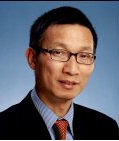A year after he assumed the top leadership role of the Chinese Communist Party, the contours of general secretary Xi Jinping’s strategy for governing are becoming more visible. It consists of three pillars: reviving economic reform, fighting corruption, and strengthening the party’s political control over society.
His effort to re-energize stalled economic reform yielded an ambitious blue print for reform at the 3rd plenum of the party’s central committee in last November. His main challenge in the coming years is to implement this plan. His government’s attempt to reassert control over Chinese society has also produced initial, albeit disquieting, results. After a ferocious crackdown, China’s once-vibrant social media seems to have been tamed.
Without a doubt, the most notable success Xi has achieved so far is on the anti-corruption front. In the past year, his campaign against graft, abuse of power, and lavish spending has, at least temporarily, created a political atmosphere in which Chinese officials must behave carefully. The numbers tell an encouraging story.
In terms of anti-corruption investigations and prosecutions, Xi’s government went after both “flies” (low-level officials) and “tigers” (senior officials) aggressively. In 2013, 17 “tigers” (officials with ranks at or above vice-minister or vice provincial governor level) were brought down, including two full members of the Central Committee. Compared with 2012, the party’s anti-corruption agency investigated 197,000 cases (16 percent more than 2012) and filed 172,000 cases (11 percent more than 2012). About 182,000 officials and party members were disciplined or punished (5 percent more than 2012).
Another measurement of the effect of Xi’s anti-corruption drive was the decline of the sale of luxury goods and business in high-end restaurants. Before the campaign, sales of luxury goods, such as expensive Swiss watchers, French cognac, jewelry and Gucci bags, were booming (30 percent in 2011 and 7 percent in 2012). But in 2013, sales of such goods were essentially flat. Some brands suffered more than others. Gucci’s sales fell by 5.4 percent in the first three quarters of 2013. Exports of Swiss watches to China fell 14 percent in the first ten months of 2013. Moutai, China’s best-known spirit-maker, had to cut prices drastically to clear its inventory.
For Xi, the initial success of his anti-corruption drive has made him popular with the Chinese public, but difficult challenges remain. Sustaining this campaign is critical to the success of his overall political strategy. Using the powerful anti-corruption agency as the enforcer of his economic reform, Xi can make lower-level officials think twice about opposing reforms harmful to their interests. At the same, by killing “flies” and “tigers,” Xi seeks to win the confidence of the Chinese public that they can count on his administration, not the rambunctious social media, to keep government officials honest.
However, relying on campaigns to fight a systemic scourge such as corruption will yield diminishing returns. In the past, Xi’s predecessors have similarly resorted to anti-corruption campaigns to garner public support and consolidate power. Hu Jintao, for example, almost tripled the rate of prosecution for corrupt officials in 2003, his first year in office (but the rate fell in subsequent years). There is simply not enough political adrenalin to force a mammoth political organization with 86 million members to adhere to Xi’s exhortations for austerity and integrity for an extended period of time.
A better strategy is to craft new rules and mobilize the Chinese public. The resolution of the 3rd plenum has taken one welcome step in the right direction. It requires that any anti-corruption investigations conducted by local party organizations must be reported to the party organization one level above, thus preventing cover-ups at the local level. Regrettably, the resolution does not go further in setting up a more robust anti-corruption institutional framework. For example, it does not establish a procedure for declaring the personal wealth of all government officials and their family members. Passing a law on the disclosure of officials’ assets is a litmus test to evaluate Xi’s commitment to fighting corruption. It should be Xi’s near-term priority.
Another strategic initiative is to rely on China’s vigilant citizens as natural allies in fighting corruption. Academic research on corruption shows that a free media and civil society are powerful tools against official maleficence. In the Chinese case, some of the recent high-profile corruption cases (such as local officials wearing expensive watches and owning multiple homes) came to light initially as a result of exposure by Chinese netizens and investigative journalists. Recruiting the media and the public as anti-corruption watchdogs can yield multiple benefits. Most importantly, anti-corruption investigations initiated as a result of public expose will not be viewed as politically motivated and thus have greater credibility.
Obviously, for a government deeply concerned about maintaining a tight grip on society and public opinion, such a step may be too risky. Such worries are overblown. To be sure, there are risks in liberalizing the media and civil society in fighting corruption. However, in the Chinese context, these risks must be weighed against the danger posed by corruption. It has always been said that “corruption will destroy China but fighting corruption will destroy the party.” Xi can prove this conventional wisdom wrong by bringing his anti-corruption effort to a new level – to save both the country and the party.
Minxin Pei is the Tom and Margot Pritzker Professor of Government and a non-resident senior fellow of the German Marshall Fund of the United States.

